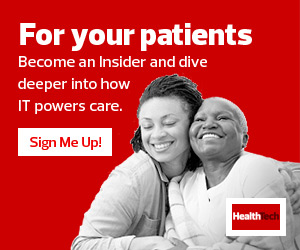Why Are Wearables So Powerful for Healthcare?
The potential of wearables for remote patient monitoring is straightforward, according to the Healthcare Information and Management Systems Society: “Wearable technologies enable the continuous monitoring of human physical activities and behaviors, as well as physiological and biochemical parameters during daily life.”
Though this functional field began with relatively simple devices — such as smartwatches capable of monitoring steps taken and average heart rate — the market has now expanded to include more in-depth medical information.
At the University of Waterloo in Ontario, Canada, researchers are developing wearable technology to monitor the overall health of patients with neurodegenerative disorders. The ONDRI@Home project aims to give practitioners an end-to-end perspective on patient health, rather than relying on point-in-time appointment data. The Waterloo work highlights the massive potential of connected healthcare devices.
READ MORE: Find out the benefits of implementing wearable devices into patient care plans.
“This technology is here to help us,” Gallego says. “It becomes a partner to provide critical medical information on demand.”
For family doctors, specialists and ongoing care providers, wearable health monitoring devices provide a window into their patients’ daily lives. Armed with actionable information such as heart rate, blood pressure and brain function data, clinicians are better prepared to meet the evolving standards of patient-centered care.
Potential Pain Points for Wearables
However, there are also possible points of concern, Gallego says, that come with wearable implementation at scale, including privacy and data security issues:
- Supply chain concerns. Since components of most medical wearables come from multiple providers, “the supply chain must be part of the risk equation,” Gallego says. “Attackers can target the device within the device.”
- Medical malware. When it comes to wearables and security, Gallego notes that the medical Internet of Things “opens the doors for new vectors of attack, including targeted malware and distributed denial of service attacks. What happens if medical devices are compromised?”
- Privacy problems. Gallego also highlights the issue of privacy. “Most vendors are driven by device operation rather than the data itself,” he says. As a result, robust authentication and authorization is critical to determine how devices collect, send and analyze data.
- Global regulatory realities. “The limit is the law,” says Gallego. “With different balances of ethics and data collection worldwide, legislation plays a key role in device security.”
- Increased provider pressures. Gallego notes that the increasing adoption of 5G cellular networking comes with the promise of 10 times the speed of its 4G counterpart, in turn making it easier for devices to collect, send and store data. Increased data volumes, however, can contribute to clinician burnout as the they struggle with “technostress, time pressure and workflow-related issues,” according to Healthcare IT News.












